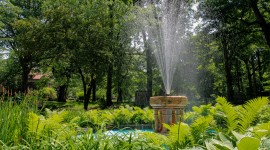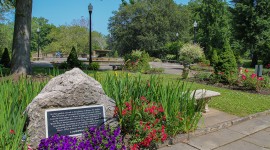Pioneer Information
Born in Schenectady, New York, Tripp was raised in Lynn, Massachusetts and attended Harvard University. He supplemented his education by working in the offices of Olmsted Brothers, Brett and Hall, Stephen Child, Wayne Stiles, and George Miller. In 1913 he relocated to the Panama Canal Zone, assisting William Lyman Phillips develop the town plan of Balboa, Panama. Three years later, he moved to Cleveland, Ohio, where he established a landscape architecture practice.
After serving briefly in World War I with the infantry as a second lieutenant, Tripp returned to his practice in Cleveland, designing residential properties, subdivisions, parks, and gardens, including the Cleveland Cultural Gardens’ Hebrew and Italian Gardens. In 1921 he became a member of the American Society of Landscape Architects (ASLA). In 1934 Tripp left private practice and joined the National Park Service as a Civilian Conservation Corps inspector, supervising the development of state parks in Texas and Wisconsin. During World War II, he served as chief of landscape architectural design for the War Department, working under fellow Clevelander A.D. Taylor on the Pentagon building and served as a specialist in the Navy Department’s Bureau of Ships. In his independent practice Tripp was engaged by the State Department, consulting on the design of several United States embassies.
In addition to his landscape architecture career, Tripp also designed and illustrated holiday greeting cards and decorative maps, publishing several between 1930 and 1954. He passed away at his home in Alexandria, Virginia and is buried in Arlington National Cemetery.














